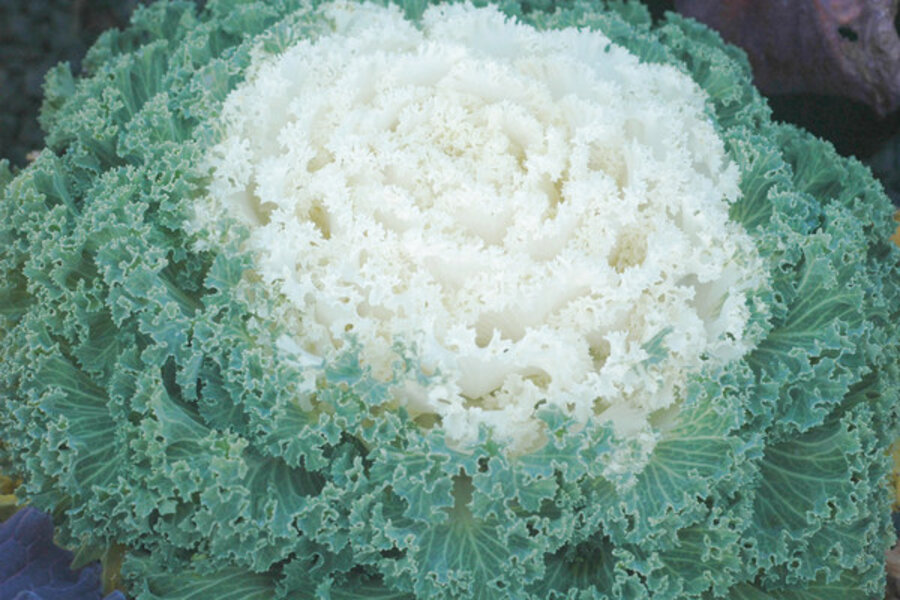Flowering kale and cabbage: Too pretty to eat
Loading...
You can eat flowering kales and cabbages -- also known as ornamental kalle and cabbage -- but you won’t want to. You’ll want them in your garden beds and borders — or in containers — where they will continue to “bloom” well into winter.
The bloom, of course, is not a flower but foliage -- a rosette of central leaves that lose their chlorophyll as the mercury drops, changing from green to white, pink, purple, and near-red.
It’s not too late to install a plant in a pot on your doorstep — flowering kales and cabbages love cold weather, and temperatures down to 20 degrees F or so (minus 7 degrees C). Gardeners in warm regions can grow ornamental kales and cabbages throughout winter.
Is it a cabbage or a kale?
How can you tell if a plant is a kale or cabbage? Both are Brassica oleracea var. acephala, genetically identical. Both also have colorful centers. But ornamental cabbages have leaves with wavy edges, whereas the leaves of ornamental kale have ruffled or crinkled edges.
Breeders, always on the prowl for something new, continue to cross and recross the two, so that knowing which is which is nearly impossible, even for the experts.
Whether you’re growing a kale or a cabbage isn’t important, as they have similar cultural requirements (a sunny location, cool temperatures, humus-rich soil, plenty of water, and good drainage). Both are biennials, but gardeners treat them as annuals and toss them on the compost pile once the temperature turns their leaves to mush.
Start from seed or plants?
You can grow ornamental kales and cabbages from seed — you need to sow in July — but a better tack for most gardeners is to buy plants, which are widely available at garden centers and nurseries in fall.
Most of these potted plants are rootbound and won’t get bigger, so choose a good-size plant, not a small one.
Ornamental kales and cabbages are a great boon when all the fall garden’s usual suspects — asters, goldenrods, Sedum ‘Autumn Joy’, even chrysanthemums — have gone by.
And in case you get hungry, ornamental kales and cabbage are rich in dietary fiber, Vitamins A, C, K, and B6, iron, magnesium, phosphorus, calcium, and more. No flower can match that!
-----
Karan Davis Cutler blogs regularly at Diggin’ It. She's a former magazine editor and newspaper columnist and the author of scores of garden articles and more than a dozen books, including “Burpee - The Complete Flower Gardener” and “Herb Gardening for Dummies.” She now struggles to garden in the unyieldingly dense clay of Addison County, Vt., on the shore of Lake Champlain, where she is working on a book about gardening to attract birds and other wildlife. To read more by Karan, click here.






